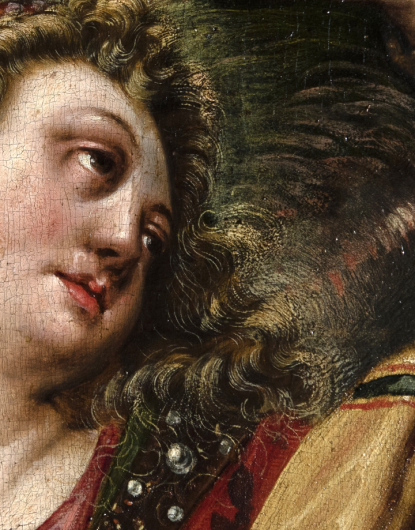Jacob Mertens and Painting in Krakow around 1600
Wawel Royal Castle inaugurates 2023 with a revelatory, new exhibition. Jacob Mertens and Painting in Krakow around 1600 features outstanding, although little known works, most of which have never before been shown in a museum. Netherlandish in style, the paintings are the work of a master of detail born and trained in Antwerp, who settled and worked in Krakow. The penetration of Netherlandish influence into Poland in the 17th century is also explored. The exhibited works also serve as a lens through which to view the thriving artistic center that was Krakow in the Baroque era.

The exhibition—on view from January 13 through April 16, 2023—presents thirty-three works including paintings, drawings, and ivory carvings, all executed around 1600. It centers on an altarpiece created in Jacob Mertens’s workshop, and its most important element—the central panel of The Annunciation, a superlative work signed by Mertens.

The exhibition delves into the circles of Krakow artists working in the Netherlandish manner through additional works from another altarpiece, this from the Dominican St. James’s church in Sandomierz other works by Krakow artists from churches in Krakow and elsewhere in Poland. Among them are a Last Supper from the Church of Sts. Peter and Paul, The Virgin and Child with Saint John the Baptist and Saint John the Evangelist from Wawel Cathedral, and Saint Hedwig’s Vision before the Crucifix from the Church of the Holy Cross. Also on vies is Tobias Fendt’s Resurrection of Christ, which features a panorama of Krakow in the background.

“Our aim in exhibiting works from collections that are not easily accessible, is to broaden the context and build a picture of such phenomena as the paths by which Netherlandish inspirations were introduced, the repetition of formal solutions, and popularity of iconographic motifs, as well as the dissemination of works by Netherlandish masters in the Central Europe of the turn of the sixteenth and seventeenth centuries,” says Wawel Royal Castle curator Krzysztof Czyzewski, who co-curated of the exhibition with Prof. Marek Walczak, Director of the Institute of Art History at the Jagiellonian University.
Another area explored is the role of primarily Netherlandish imports on the Krakow artistic community of the seventeenth century. The curators emphasize the significance of the penetration of Netherlandish solutions to Poland in the seventeenth century through small works imported into the country. “These objects were executed in various media and included drawings, such as the design for a chandelier with the Virgin Mary from the National Library in Warsaw, and ivory carvings. A thoroughly unusual work by any standard is a life-sized scene of the Lamentation of Christ carved in wax, which come from the church at Góra Kalwaria,” adds Professor Marek Walczak.

Jacob Mertens, The Annunciation (detail), Krakow, ca. 1600; Krakow, Saint Mary’s Basilica
Jacob Mertens was born in Antwerp, the son of Peeter Mertens and Cathlijne van Scoor. He learned his craft in the workshop of Huybrecht (Hubert) Bruggeman, about whom so little is known that it is impossible to determine what influence he had on his pupil. Mertens left his hometown and settled in Krakow, entering the local artists’ guild on October 23, 1589, and becoming a citizen in 1595. In Krakow he met his wife Barbara, the widow of a painter named Paweł Czumturn (Tomtorn). In 1598, in conjunction with a trip to Flanders, Mertens made a will in which he gave his wife the not insignificant sum of 1500 zlotys. While there, he had the opportunity to familiarize himself with the contemporary artistic culture, especially with the commissions being carried out for the Antwerp cathedral, whose furnishings were being steadily being replaced following the Calvinist iconoclastic attacks of 1566 and 1581. He died before June 26, 1609
Jacob Mertens was born in Antwerp, the son of Peeter Mertens and Cathlijne van Scoor. He learned his craft in the workshop of Huybrecht (Hubert) Bruggeman, about whom so little is known that it is impossible to determine what influence he had on his pupil. Mertens left his hometown and settled in Krakow, entering the local artists’ guild on October 23, 1589, and becoming a citizen in 1595. In Krakow he met his wife Barbara, the widow of a painter named Paweł Czumturn (Tomtorn). In 1598, in conjunction with a trip to Flanders, Mertens made a will in which he gave his wife the not insignificant sum of 1500 zlotys. While there, he had the opportunity to familiarize himself with the contemporary artistic culture, especially with the commissions being carried out for the Antwerp cathedral, whose furnishings were being steadily being replaced following the Calvinist iconoclastic attacks of 1566 and 1581. He died before June 26, 1609














